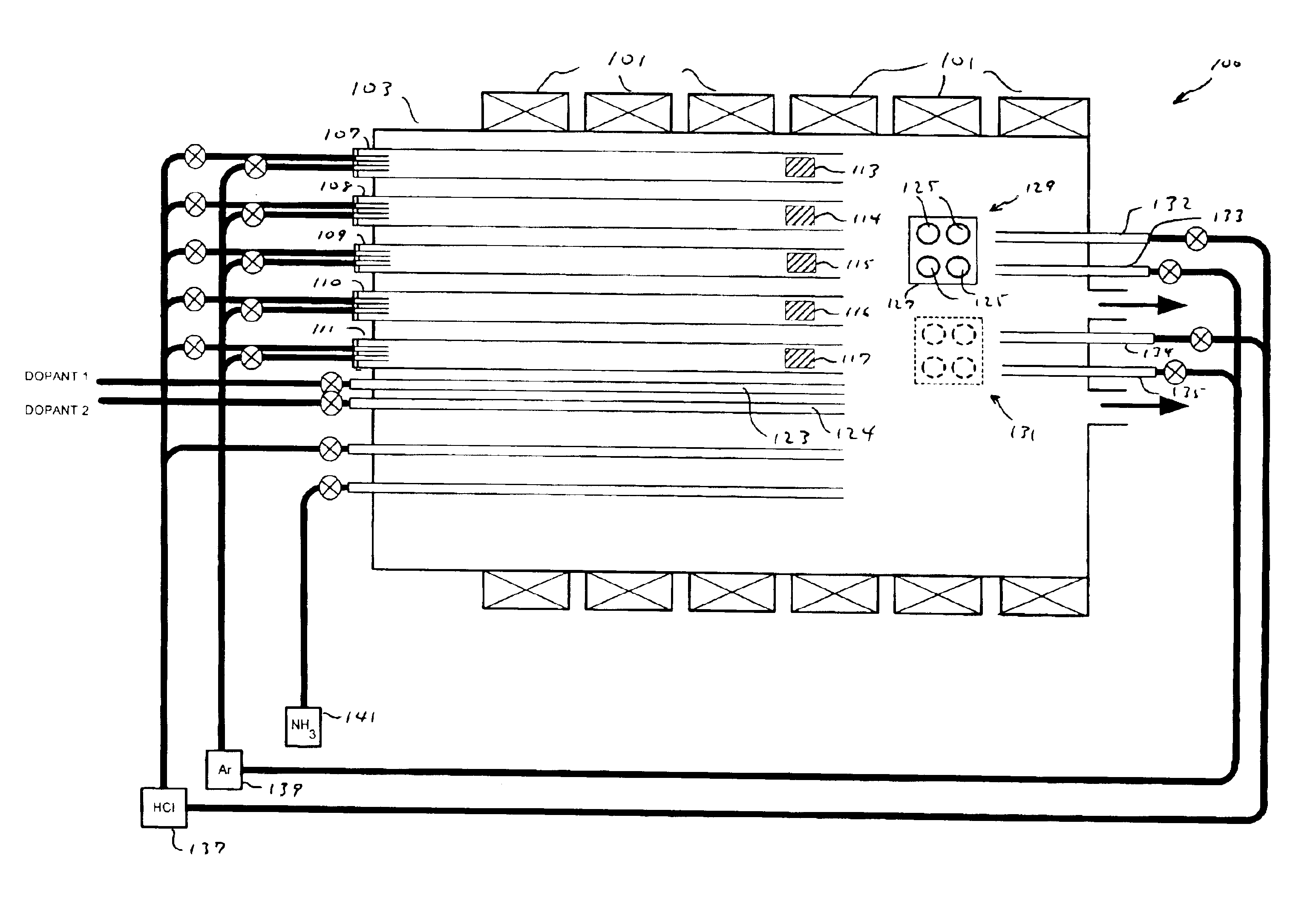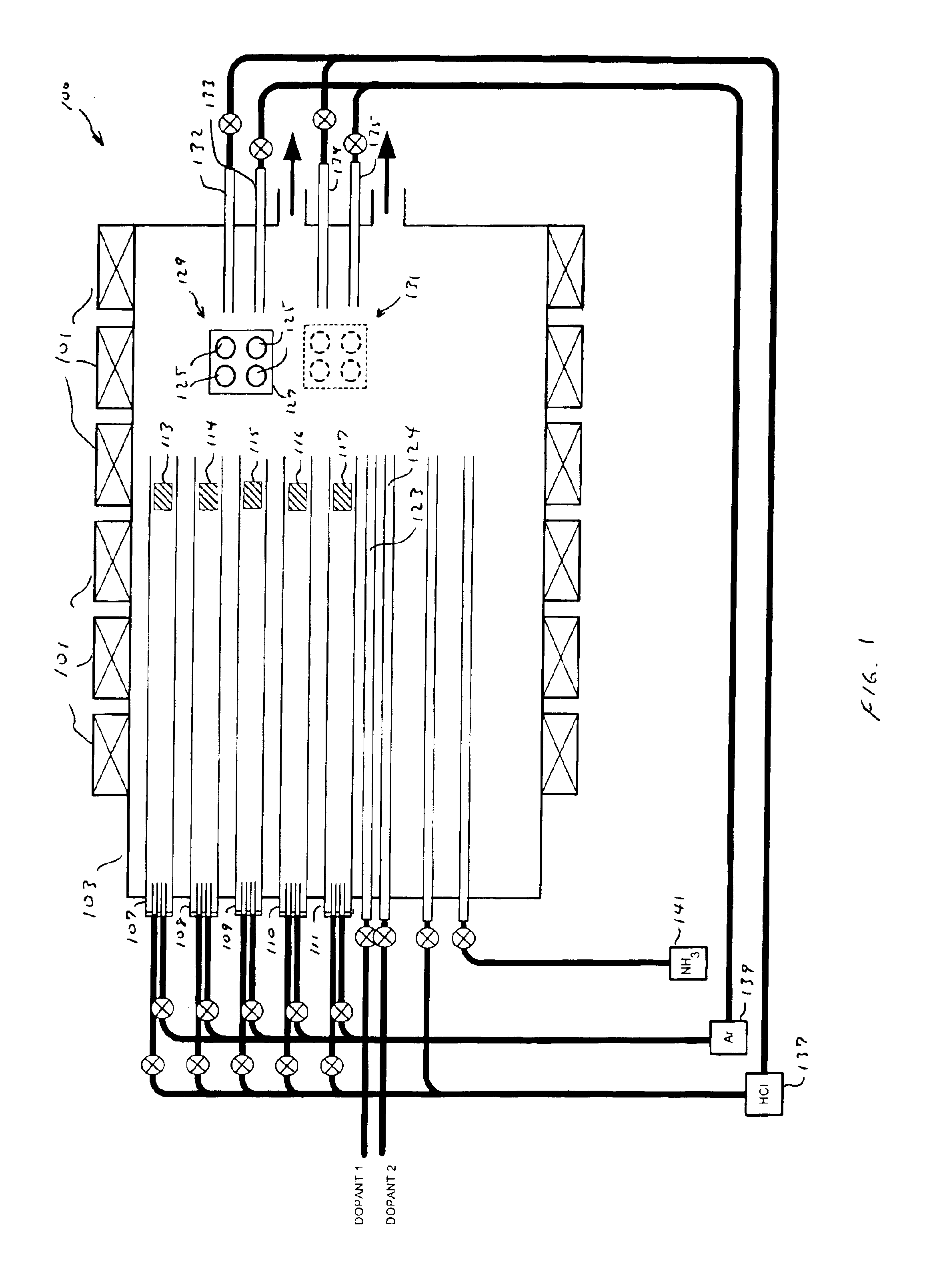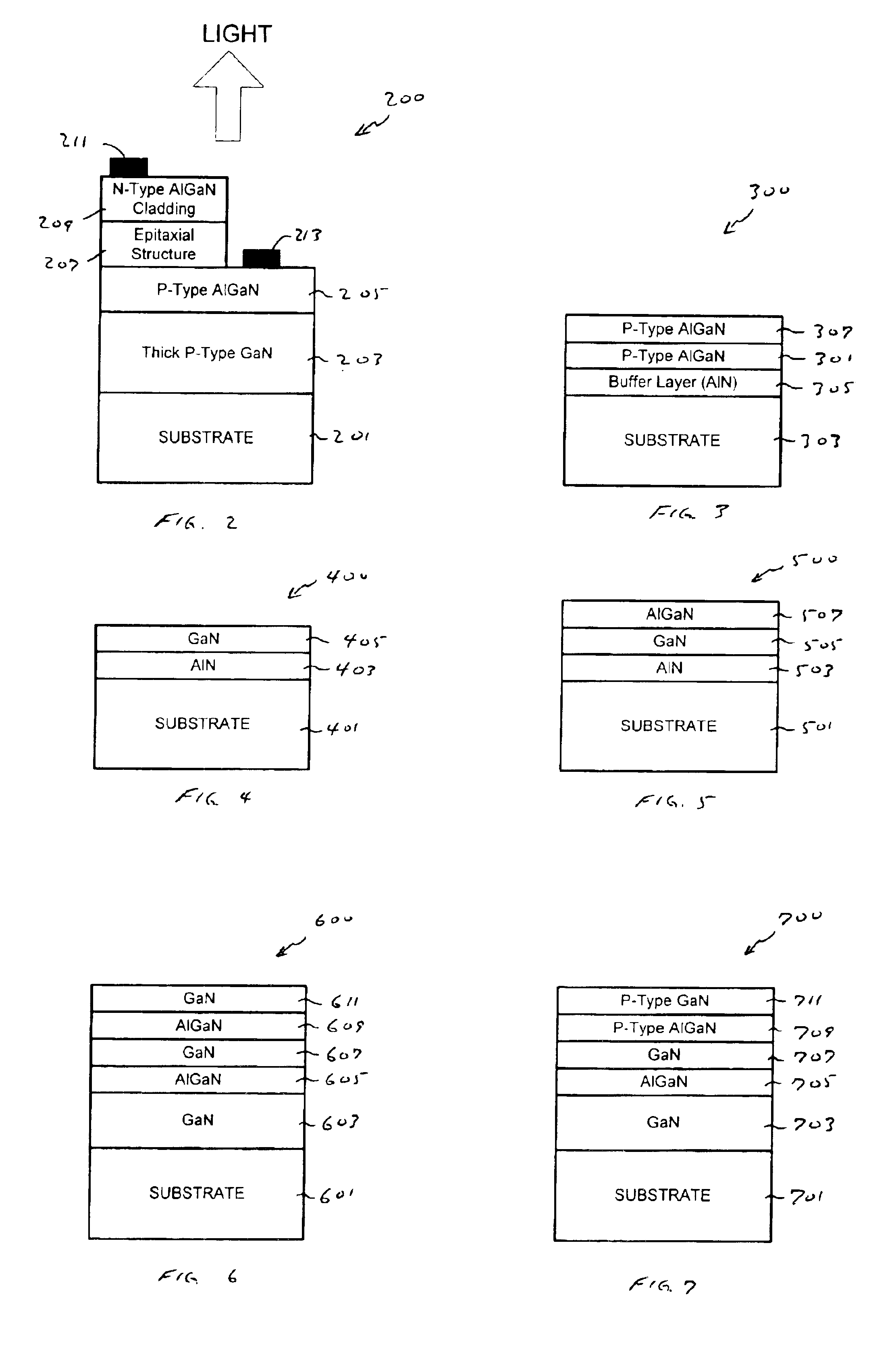Manufacturing methods for semiconductor devices with multiple III-V material layers
a technology of iii-v material and fabrication method, which is applied in the direction of crystal growth process, polycrystalline material growth, chemically reactive gas growth process, etc., can solve the problems of high electric field breakdown, direct band gap structure, high thermal conductivity, etc., and achieve the effect of preventing thermal shock, reducing or completely disrupting the epitaxial growth rate, and controlling the conductivity of each layer
- Summary
- Abstract
- Description
- Claims
- Application Information
AI Technical Summary
Benefits of technology
Problems solved by technology
Method used
Image
Examples
embodiment i
[0049]A 4 inch sapphire substrate with a (0001) surface orientation was loaded into an HVPE reactor. The reactor and sources were prepared as noted above in preparation for the growth of a p-type GaN layer. A growth rate of 1 micron per minute was observed. After a total of fifteen minutes, the sample was removed from the growth zone. No cracks were visible in the resulting 15 micron thick p-type GaN layer which had a standard deviation in layer thickness across the entire wafer of less than 10 percent, a dislocation density of less than 109 cm−2 and an electrical resistivity of less than 5 ohm-cm. The Na—Nd concentration was 1019 cm−3 and the FWHM of the x-ray rocking curve measured in ω-scanning geometry for the (0002) reflection was 550 arc seconds.
embodiment ii
[0050]As illustrated in FIG. 2, a 4 inch sapphire substrate 201 with a (0001) surface orientation was loaded into an HVPE reactor and a 12 micron p-type GaN layer 203 with a Mg concentration of 3×1020 cm−3 was grown following the process described above. After GaN layer 203 was grown, substrate 201 was removed from the growth zone and aluminum trichloride was delivered to the growth zone. Gallium chloride and Mg vapor continued to be delivered to the growth zone. Substrate 201 was then reintroduced into the growth zone and a 0.3 micron thick p-type AlGaN layer 205 with an AlN concentration of 15 molecular percent and an Na—Nd concentration of 5×1019 cm−3 was grown. The substrate was removed from the growth zone after completion of the AlGaN layer. In a separate epitaxial process utilizing an additional source (i.e., indium), an n-type multiple quantum well InGaN structure 207 was grown on top of p-type AlGaN layer 205. After completion of the InGaN structure, an n-type AlGaN claddin...
embodiment iii
[0051]FIG. 3 illustrates another embodiment of the invention. In this embodiment a thick p-type AlGaN layer 301 was grown on a sapphire substrate 303. Layer 301 can be grown without misorientation from the (0001) plane, or with a small misorientation angle preferably in the range of 0 to 3 degrees and more preferably in the range of 0.5 to 3 degrees. The AlN concentration can be set between 0 and 60 molecular percent with an Na—Nd concentration preferably greater than 5×1018 cm−3, and more preferably greater than 1×1019 cm−3.
[0052]Although AlGaN layer 301 can be grown directly on substrate 303, in this embodiment an AlN buffer layer 305, preferably between 0.05 and 0.5 microns thick, is interposed between layer 301 and the substrate. Alternately, buffer layer 305 can be comprised of aluminum oxy nitride. Buffer layer 305 is formed after the substrate has been etched (e.g., treated with HCl and / or gaseous aluminum chloride for 5 to 20 minutes) using HVPE techniques in which layer 305...
PUM
| Property | Measurement | Unit |
|---|---|---|
| temperature | aaaaa | aaaaa |
| temperature | aaaaa | aaaaa |
| temperature | aaaaa | aaaaa |
Abstract
Description
Claims
Application Information
 Login to View More
Login to View More - R&D
- Intellectual Property
- Life Sciences
- Materials
- Tech Scout
- Unparalleled Data Quality
- Higher Quality Content
- 60% Fewer Hallucinations
Browse by: Latest US Patents, China's latest patents, Technical Efficacy Thesaurus, Application Domain, Technology Topic, Popular Technical Reports.
© 2025 PatSnap. All rights reserved.Legal|Privacy policy|Modern Slavery Act Transparency Statement|Sitemap|About US| Contact US: help@patsnap.com



